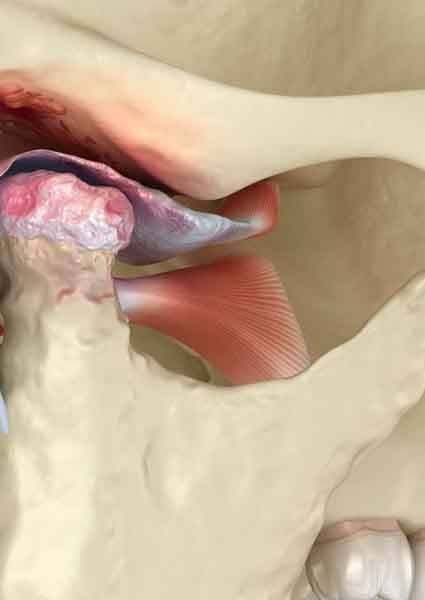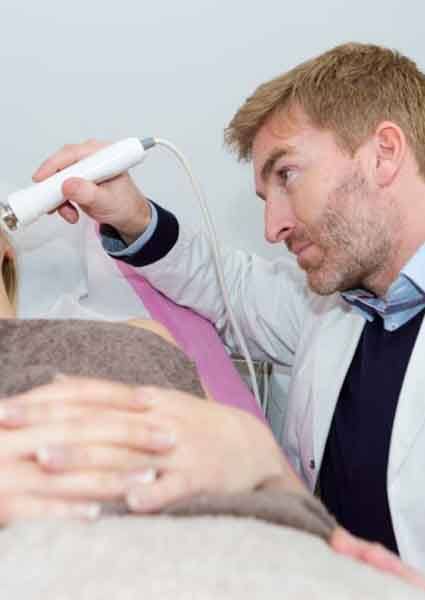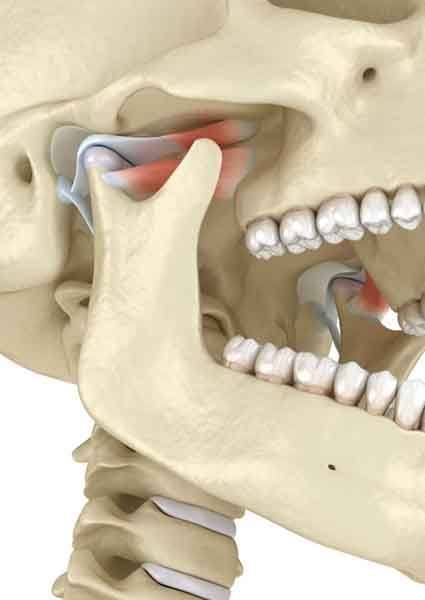TMJ Treatment – Hollywood, FL
Non-Invasive Therapy for Persistent Jaw Pain
If you struggle with persistent jaw pain, difficulty chewing, frequent headaches, and other related symptoms, it is possible that you have temporomandibular joint disorder, which is also known as TMJ or TMD. Without treatment, this condition can interfere with your daily life and cause musculoskeletal symptoms throughout your body. Fortunately, our Hollywood orthopedics team is eager to help you find relief through effective, non-invasive therapies.
Understanding TMJ Disorder

The temporomandibular joints (TMJs) are located directly in front of your ears. They control the movements of your lower jaw (also called the mandible). When the TMJs become stressed or injured, a variety of symptoms can result, including pain, lockjaw, headaches, neck aches, back aches, and more. TMD can even be a migraine trigger for some individuals.
TMD can be caused by various factors, including dental misalignment, stress, teeth grinding, injuries, arthritis, poor posture, and more. In some cases, the cause remains unknown.
Diagnosing TMJ Disorder

We will listen to you describe your symptoms and may use diagnostic ultrasound to understand what is happening within your jaw joints. We also want to learn how your condition is affecting the rest of your body because TMD is known as a descending disorder; it can cause misalignments and discomfort in various places throughout the body.
Once we understand the scope of the problem, we will be able to recommend your next steps.
Treatments for TMJ Disorder

Modern medicine offers numerous treatments for TMJ disorder. Some are available from dentists, chiropractors, and other types of practitioners. If we believe you would benefit most from their specialty care, we will let you know. For some individuals, we recommend a multi-pronged approach that involves care from different medical professionals. Of course, we also offer a few in-office treatments that have provided effective TMD relief for many individuals.
Cranial Osteopathy
Cranial osteopathy is a form of therapy that involves careful and gentle manipulation of the spine and head. It encourages proper fluid flow in these areas and can help in diagnosing various conditions. It is a relaxing and completely non-invasive treatment that may help to reduce tension in the muscles around your jaw and thereby lead to TMD symptom relief.
Manual therapy
Manual, or physical, therapy involves the use of exercises that can strengthen and stretch the muscles that control the TMJs. Over time, it may train the TMJs to work properly and in good alignment, which can lead to a significant reduction in symptoms. Often, manual therapy is used as a complement to treatments from a dental team.
Botox injections
TMD is associated with muscle strain and tension throughout the face and neck. BOTOX can help with this issue. A few strategically placed injections can limit the movement of muscles around your jaw joints, forcing them to relax. As a result, you may notice a significant reduction in pain and discomfort. The effects of BOTOX usually kick in after 1 – 2 weeks and have the potential to last for several months at a time.









